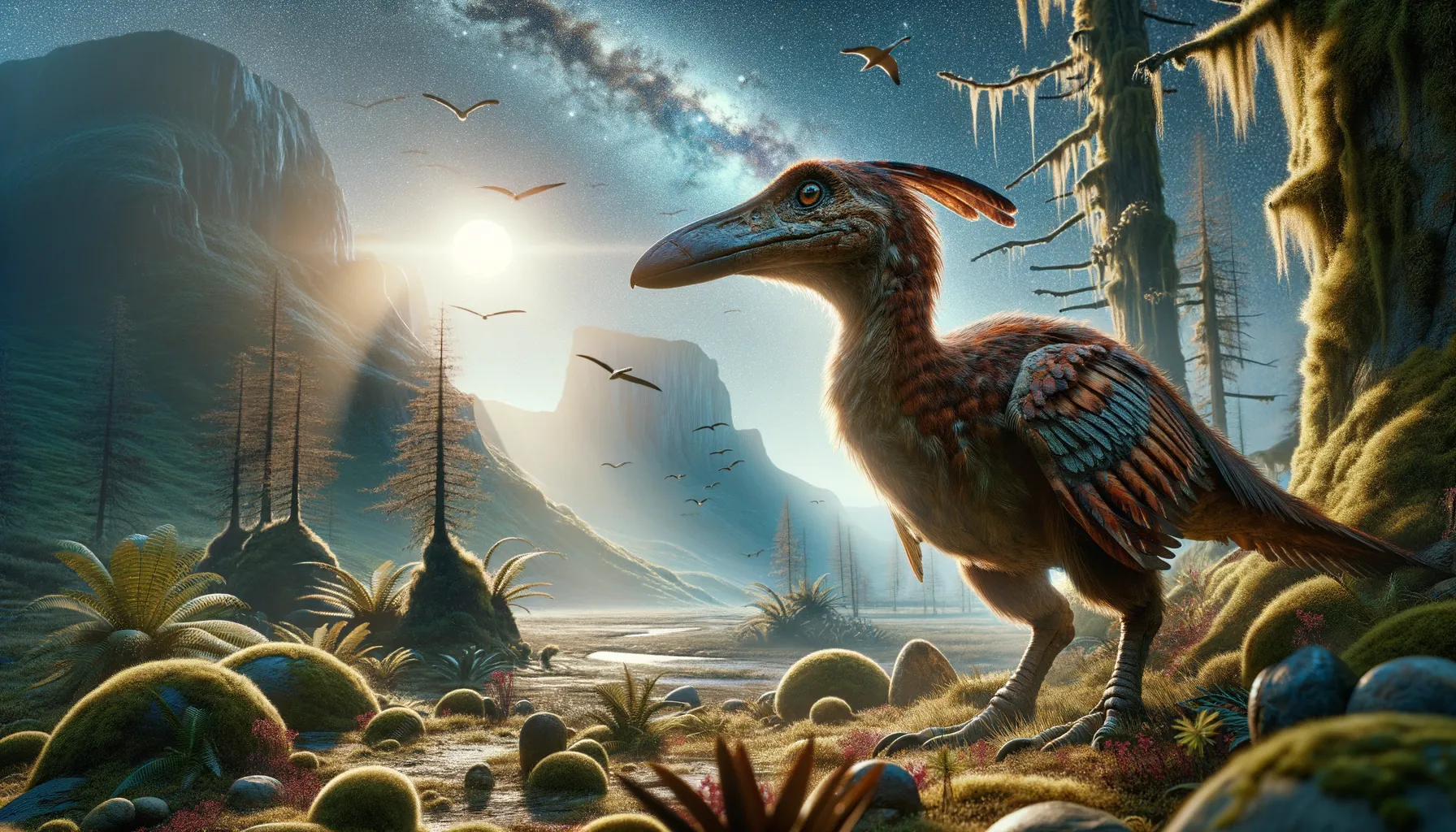
Eurolimnornis
Birds of a feather from the Cretaceous era!
Period
Cretaceous
Length
Estimated to be small, similar to modern birds.
Height
Unknown due to limited fossil evidence.
Weight
Unknown due to limited fossil evidence.
Eurolimnornis is a genus of prehistoric birds known from the Late Cretaceous period. It is primarily known from a few fossil remains, which suggest it had features similar to modern birds. The fossils were first discovered in Portugal and have provided valuable insights into the evolution of avian species during this time. This genus highlights the diversity of bird-like creatures that existed during the age of the dinosaurs.
Diet
It's likely that Eurolimnornis had a diet similar to small birds, possibly consisting of insects and seeds. The exact diet cannot be determined precisely due to limited fossil evidence.
Hunting
Being a small bird-like dinosaur, it likely foraged for food rather than actively hunting. Its physical structure suggests it adapted to a life of opportunistic feeding.
Environmental challenges
Eurolimnornis lived during a time of great change on Earth, with fluctuating climates and tectonic movements. These changes would have influenced local habitats and the availability of food resources. Survival would have required considerable adaptability as environments shifted around them.
Speed
Not enough data to determine speed accurately.
Lifespan
Unknown, typical for birds from its era.
First discovery
Discovered in Portugal in the early 1990s.
Fun Facts
- Eurolimnornis was a small bird-like dinosaur that lived during the Late Cretaceous period.
- It is known only from fossilized footprints found in Spain, giving us a glimpse into its ancient life.
- The name 'Eurolimnornis' means 'European marsh bird', hinting at its likely habitat near water bodies.
- Eurolimnornis is believed to have been a wader, similar to modern-day herons or cranes.
- While it had some bird-like features, Eurolimnornis still had characteristics typical of non-avian dinosaurs.
- Its existence suggests that prehistoric Europe had diverse ecosystems supporting a variety of lifeforms.
- Eurolimnornis helps paleontologists understand more about the transition from dinosaurs to modern birds.
Growth and Development
Like many early birds, it likely developed at a rapid pace to reach maturity quickly. This would have been a key survival strategy to avoid becoming prey. The growth rates and development stages are not well understood due to limited fossil records.
Habitat
Eurolimnornis fossils suggest it once inhabited regions that were likely wetland or lacustrine environments in Portugal. Such areas would provide ample resources and protection. The combination of water bodies and nearby vegetative cover would have contributed to a diverse ecological niche.
Interaction with other species
Its existence in the diverse ecosystems of the Cretaceous likely involved interactions with a variety of species, including other small dinosaurs and mammals. It might have faced competition from similar-sized creatures and predation from larger carnivorous species.
Natural lifespan
The natural lifespan of Eurolimnornis is not well known.
Reproduction
Reproductive strategies likely included laying eggs in secure nests, similar to modern birds. Parental care could have been a factor, ensuring the young were nurtured to a survivable age.
Social behaviour
Eurolimnornis may have lived in small flocks or loose knit communities for protection and increased foraging efficiency. Vocalizations could have played a role in communication within these groups.
Fossil locations
The primary location for Eurolimnornis fossils is the region of Portugal. This area has provided insight into the diverse bird-like species present during the Late Cretaceous. Fossil discoveries have been limited, which poses challenges in fully understanding this genus.
